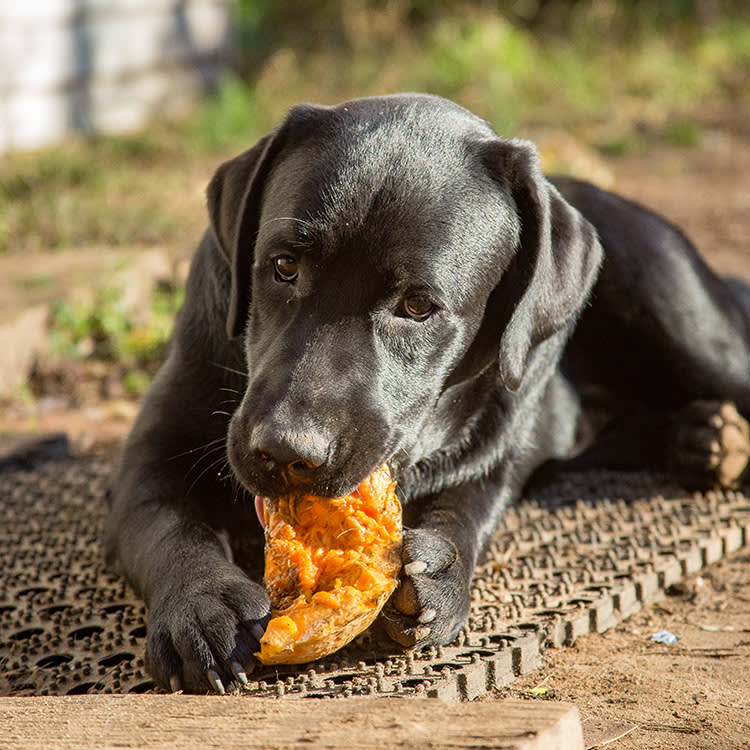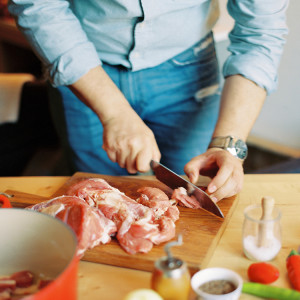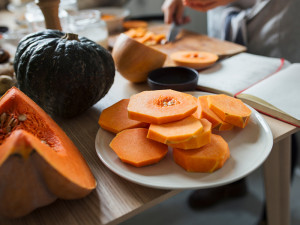Can Dogs Have Papaya?
Who knew papayas could be such a sweet treat for pups?

share article

Your pet wants you to read our newsletter. (Then give them a treat.)
Can dogs eat papayas? Yup, dogs can safely eat papaya when fed in moderation. This fruit native to Mexico is a good source of essential fiber, vitamins and minerals. But, like other overly sweet fruits (pineappleopens in a new tab, anyone?), papaya contains a lot of natural sugar, which can cause a mild stomach upset if your pup overeats. So don’t go overboard. How much papaya depends on the size of your dog — a few bites are more than enough. Papaya is best served to dogs fresh, so steer clear of dehydrated and freeze-dried, which are overly concentrated in sugars.
Benefits of papayas for dogs.
If you’re looking for a sweet summer treat for your pup, this tropical fruit also has plenty of nutritional benefits too. Like other fruits, papaya is loaded with fiber (see you later, constipationopens in a new tab). They’re also a good source of beta-carotene (vitamin A), which the body can use as an antioxidant and vitamin C which benefits a dog’s immune system. Here’s a breakdown of the benefits of papaya for dogs:
Vitamins A, C, K, and E support your dog’s immune system and help build proteins.
Fiber aids in digestion and supports the gut biomeopens in a new tab, reducing the risk of chronic diseases.
Minerals like calcium and potassium ensure strong bones and muscle function.
Digestive enzymes help break down nutrients from food, providing optimal absorption.
Can dogs eat papaya skin and seeds?
Avoid feeding your pup papaya skin which is much too thick to properly digest; it could cause a mild stomach upset or, worse, potentially lead to intestinal obstruction. Similarly, papaya seeds are generally not recommended for dogs because they could cause stomach irritation and contain trace amounts of cyanide. Not good for pups.
How should papayas be served to dogs?
When it comes to papayas, fresh is best. Remove the skin and seeds, leaving only the fleshy orange meat. Cut it into small chunks or include it in a dog treat recipe like the one below.
If your pet has any gastrointestinal issues, is sensitive to GI conditions like pancreatitis opens in a new tabor has other health conditions (like allergies or diabetesopens in a new tab), don’t serve your dog papaya. As always, before introducing any new food, consult your veterinarian with any questions or concerns.

Daniela Lopez
Daniela Lopez is a digital media specialist and long-time contributor to The Bark.
Related articles
![A man cutting raw chicken on a cutting board in the kitchen]() opens in a new tab
opens in a new tabHow to Make Homemade Stew for Your Dog
Make this easy chicken stew for your pup.
![Close up of chopped pumpkin with person chopping pumpkin in the back]() opens in a new tab
opens in a new tabHow to Turn Your Jack-o’-Lantern into Dog-Friendly Pumpkin Puree
This simple recipe can serve as the base for dog treats,
![Side view of a cute hungry dog standing next to a red bowl with food in a studio with white background]() opens in a new tab
opens in a new tabHow to Get a Dog to Eat
You can’t appease a picky dog with fish fingers like you can with your toddler. Here are some things you can do



